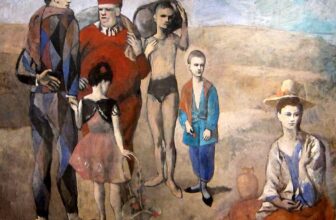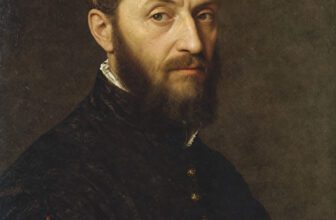
Saint Matthew and the Angel: A Masterpiece of Art and Controversy
In the dimly lit corners of art history, few figures loom as boldly as Michelangelo Merisi da Caravaggio. Known for his tempestuous life and transcendent talents, Caravaggio revolutionized painting with an intensity and realism that shook the foundations of the art world. Among his most fascinating works is Saint Matthew and the Angel, a painting that not only captured a divine encounter but also sparked controversy that echoes through the centuries.
Today, the story of Saint Matthew and the Angel is as much about the painting itself as it is about the man who created it, the religious tensions it stirred, and the fate of the masterpiece. Let’s dive deep into this mesmerizing journey.
Who Painted Saint Matthew and the Angel?
The mind, and hand, behind Saint Matthew and the Angel was Caravaggio, an Italian Baroque master whose short but tumultuous life (1571–1610) left an indelible mark on the art world.
Caravaggio’s rise was meteoric. After arriving in Rome in the early 1590s, he quickly attracted patrons who appreciated his unflinching portrayal of human emotion and divine mystery. His paintings throbbed with life: saints and sinners alike appeared not as distant figures, but as flesh-and-blood beings we could almost touch.
Commissioned around 1602, Saint Matthew and the Angel was intended for the Contarelli Chapel in the Church of San Luigi dei Francesi in Rome. The church had been built for the French community in the city and was seeking works to glorify Saint Matthew, one of the four Evangelists and the author of the first Gospel.
Caravaggio was chosen to paint three works for the chapel: The Calling of Saint Matthew, The Martyrdom of Saint Matthew, and Saint Matthew and the Angel. Each painting would depict a pivotal moment from the apostle’s life and mission.
What Is Happening in the Painting Saint Matthew and the Angel?
The scene Caravaggio envisioned for Saint Matthew and the Angel is intimate and charged with spiritual tension. In the painting, the aged Saint Matthew sits at a simple desk, trying to compose his Gospel. Hovering beside him, the angel, young, radiant, and serene, gently guides his hand, helping him shape the sacred text.
But Caravaggio’s rendering was unlike anything the religious authorities had expected.
In the first version (which we’ll soon discuss in detail), Saint Matthew is portrayed not as a noble, idealized figure, but as a humble, almost rustic man. His feet are bare and dirty. His expression is one of confusion and awe, as if overwhelmed by the task at hand. The angel, a graceful, youthful spirit, leans close, almost childlike, as if whispering the divine words into Matthew’s ear.
Rather than showing Matthew as an omniscient sage, Caravaggio made him relatable: a mortal struggling to comprehend the immense responsibility placed upon him. It was a radical humanization of a saint, and it didn’t sit well with everyone.
Why Was Saint Matthew and the Angel by Caravaggio So Controversial?
When the first version of Saint Matthew and the Angel was unveiled, the church authorities were scandalized.
Here’s why:
Realism Over Idealism: Renaissance and Mannerist traditions favored idealized, polished depictions of religious figures, bodies perfect, faces serene, gestures graceful. Caravaggio’s Matthew was rough, wrinkled, and, to some, downright common. His bare feet, dirty and prominently displayed, were especially offensive to viewers who expected spiritual loftiness.
Inappropriate Intimacy: The angel was portrayed almost playfully, closely intertwined with Matthew. Some critics felt the dynamic between them was too familiar, lacking the reverence proper to a sacred encounter.
Theological Concerns: The idea that a saint might need such heavy-handed guidance from an angel to write the Gospel seemed to some to diminish Matthew’s divine inspiration and authority.
In short, Caravaggio’s painting was considered too “earthy,” too human. The commission rejected the work and demanded a replacement.
Caravaggio’s Response: A Second Version
Faced with rejection, Caravaggio was not deterred. Instead, he painted a second version of Saint Matthew and the Angel, which aligned more closely with the church’s expectations.
In the second version, Saint Matthew appears more composed, dignified, and learned. His posture is upright, his demeanor reflective. The angel is still present but more aloof, pointing delicately rather than physically guiding Matthew’s hand. The scene retained Caravaggio’s signature use of light and shadow (chiaroscuro), but the raw, unsettling realism of the first version was tempered into something more traditionally acceptable.
This second painting was installed in the Contarelli Chapel, where it remains an essential part of Caravaggio’s legacy.
What Happened to the First Version of Saint Matthew and the Angel?
You might wonder: if the first version was rejected, what became of it?
For a time, the original painting was held in private collections. It eventually found its way to Berlin’s Kaiser Friedrich Museum (now the Bode Museum) in the 19th century.
Tragically, during World War II, the painting was destroyed in an air raid on Berlin in 1945. Along with many priceless works of art, Caravaggio’s daring, revolutionary first Saint Matthew and the Angel was lost forever.
Today, we know the painting only through black-and-white photographs and sketches made before its destruction. These images hint at the painting’s raw power, making the loss even more poignant.
Where Is the Painting Saint Matthew and the Angel by Caravaggio Located Today?
The second version of Saint Matthew and the Angel, the one accepted by the church, still hangs in the Contarelli Chapel at San Luigi dei Francesi in Rome. It shares the chapel with Caravaggio’s The Calling of Saint Matthew and The Martyrdom of Saint Matthew, forming a trilogy that is nothing short of breathtaking.
Visitors to the chapel are often struck by the paintings’ immediacy. The dimly lit space perfectly complements Caravaggio’s use of tenebrism (the dramatic interplay of light and shadow), making the scenes feel almost three-dimensional. Saint Matthew’s story unfolds not as a distant legend, but as a living, breathing drama.
Standing there, one can almost hear the rustle of the angel’s wings, the scratching of Matthew’s pen, and the heavy silence of divine inspiration descending into the heart of a mortal man.
The Legacy of Saint Matthew and the Angel
Caravaggio’s Saint Matthew and the Angel, both versions, remain pivotal in understanding his artistry and his impact on art history.
Humanizing the Divine: Caravaggio’s vision challenged centuries of religious art by portraying saints not as untouchable paragons but as relatable, imperfect humans. In doing so, he brought spiritual narratives closer to everyday life, making them more accessible and emotionally resonant.
Chiaroscuro and Drama: His masterful use of light and darkness didn’t just create visual drama, it reflected spiritual realities, the perpetual tension between earthly suffering and divine grace.
Influence on Baroque Art: Caravaggio’s boldness paved the way for the Baroque movement, influencing generations of artists like Rubens, Rembrandt, and Velázquez.
Controversy as Innovation: The controversy surrounding the first Saint Matthew and the Angel reminds us that artistic innovation often meets resistance. Yet it is precisely such daring visions that propel art forward, challenging audiences to see, and feel, differently.
The story of Saint Matthew and the Angel is a tale of brilliance, controversy, loss, and enduring inspiration. Caravaggio’s fearless brush captured not just the face of a saint, but the eternal struggle of humanity reaching for the divine.
Though the first version of the painting has been lost to history, its spirit lives on, in the surviving second version, in the countless artists who drew inspiration from Caravaggio’s radical realism, and in every viewer who stands in awe before his works today.
If you ever find yourself wandering the streets of Rome, step into the hushed sanctum of San Luigi dei Francesi. Look up at Saint Matthew, pen in hand, angel at his side, caught in the very act of bridging heaven and earth. You’ll witness not just a masterpiece, but a moment of pure, breathtaking humanity.




